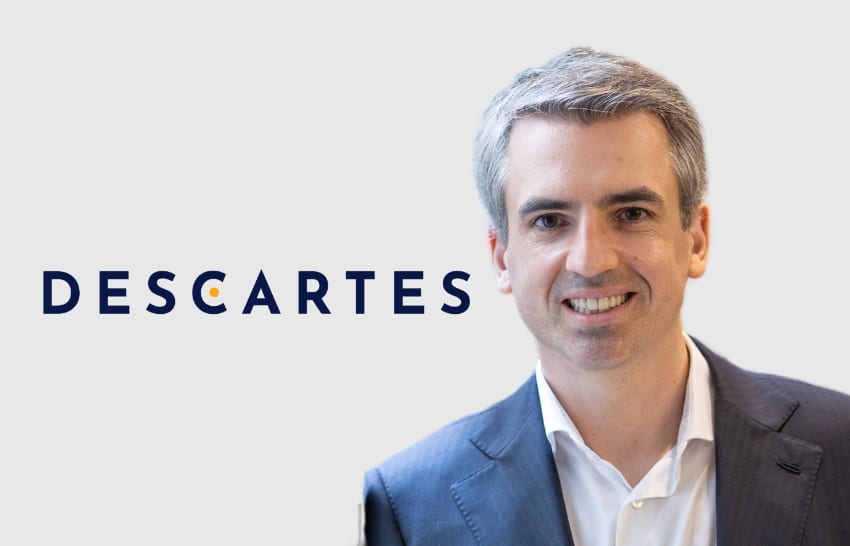Parametric market to grow, increasing role for ILS investors: Descartes CEO

Tanguy Touffut, the CEO & Co-founder of parametric insurance and risk transfer specialist Descartes Underwriting, expects strong growth for the parametric marketplace, while the role of insurance-linked securities (ILS) investors in backing parametric risk transfer structures is expected to increase as well.
Speaking with Artemis in a recent interview around the annual reinsurance industry Rendez-Vous event in Monte Carlo, Touffut explained that 2024 is expected to be a good year for the parametric market, with further growth likely.
“We expect strong market growth in 2024. Existing drivers such as the increase in natural catastrophes, both for primary and secondary perils, and the hardening market should continue throughout the year,” Touffut explained.
Adding that, “We’ve also seen growth in certain lines of business/occupancies where finding Cat capacity is becoming more difficult, leading to increased demand for parametric. For example, beachfront hotels in SE Asia or Florida etc.”
On the product development side, Descartes has been seen as a leader in developing new parametric risk transfer and insurance opportunities.
Touffut said this focus will continue and he expects the use of parametric triggers will continue to expand across new areas of insurance, “New products will be launched in the market. Some will cover risks beyond climate risk, such as cyber, and we will see hybrid cover offerings that combine the best of both the parametric and the traditional indemnity approaches.
“Capital inflow in the parametric risk space has also been significant over the past few years, underpinning a broader recognition of the value and increasing importance of the parametric product offering in modern corporate risk management. This will continue as we head into 2024.”
He also sees a growing role for the insurance-linked securities (ILS) market, recognising the inherent attraction that a parametric trigger structure should have for investors.
“Capital markets will play a more significant role in backing parametric risk in the middle to long term,” he explained.
“The rationale for ILS funds is simple: no creeping losses but a clear “cut” and “fair” returns, with less uncertainty on the modeling side, as long as climate change is properly factored in.
“Additionally, capital markets are looking for insurance investments that meet their ESG criteria. Many parametric insurance products in mature and emerging markets will tick these boxes, especially as underwriting can play a vital role toward a net-zero economy,” Touffut said.
On the subject of basis risk, Touffut is sanguine and acknowledges that it exists across all of insurance, parametric or indemnity, but highlights the role of technology and innovation in minimising basis risk.
“Basis risk is intrinsic to insurance, be it traditional or parametric. In the case of traditional insurance, different loss adjusters may arise with diverging loss assessments after a claim notification, and contracts usually include many exclusions that can be complex for clients to understand. On the other hand, parametric players are working hard to minimize basis risk through technology and advanced data. For instance, if we take wildfire covers to protect large plantations as an example, satellite imagery combined with AI-driven algorithms will lead to better loss assessment than loss adjusters,” he said.
Highlighting new innovative technology that can assist, by telling us, “Overall, we are able to use more and more data sources from the Internet of Things, satellites, and various sensors. Combined with new AI techniques, we can develop solutions that fully and accurately reflect the insured risks and provide our clients with a more comprehensive understanding of their exposures.”
Importantly, Touffut recognises the need to bring parametric and indemnity coverage together, to more closely integrate one with the other and provide more holistic risk management solutions as a result, where parametric triggers play an important role in integrated re/insurance programs.
“Parametric insurance can both replace or complement traditional insurance. That being said, we expect to see more covers combining parametric insurance for speed and transparency for Cat perils with traditional insurance for non-Cat perils,” Touffut explained.
He forecast that, “There will be significant growth in the market’s ability to better construct parametric policies in full conjunction with traditional covers. For example, a client could take advantage of having traditional indemnification for property damage, but all NDBI or financial loss covered through parametric.”
Finally also explaining that, “Due to the hardening market and the capacity crunch, we also expect to see large groups to require capacity from all sources, be it parametric or traditional.”
Read all of our interviews with ILS, reinsurance and risk transfer sector professionals here.






